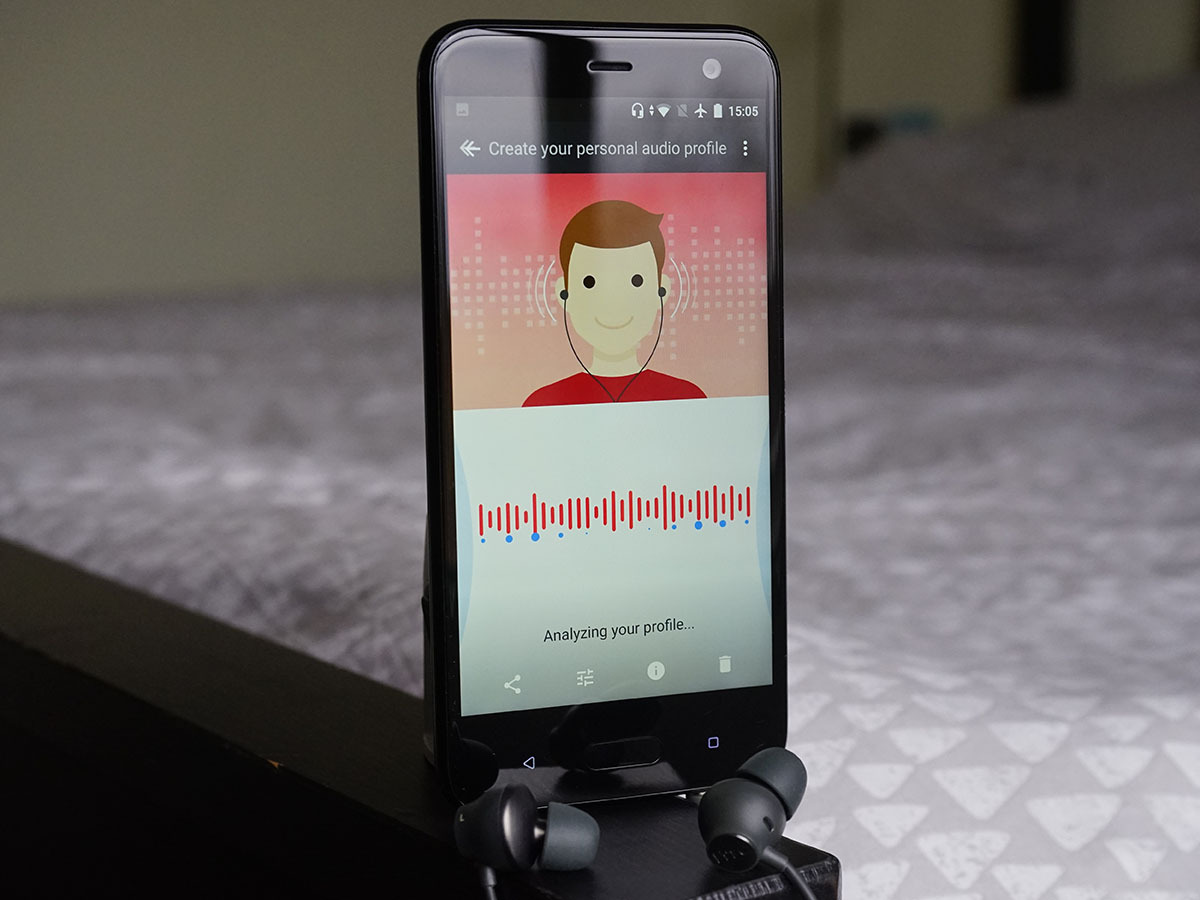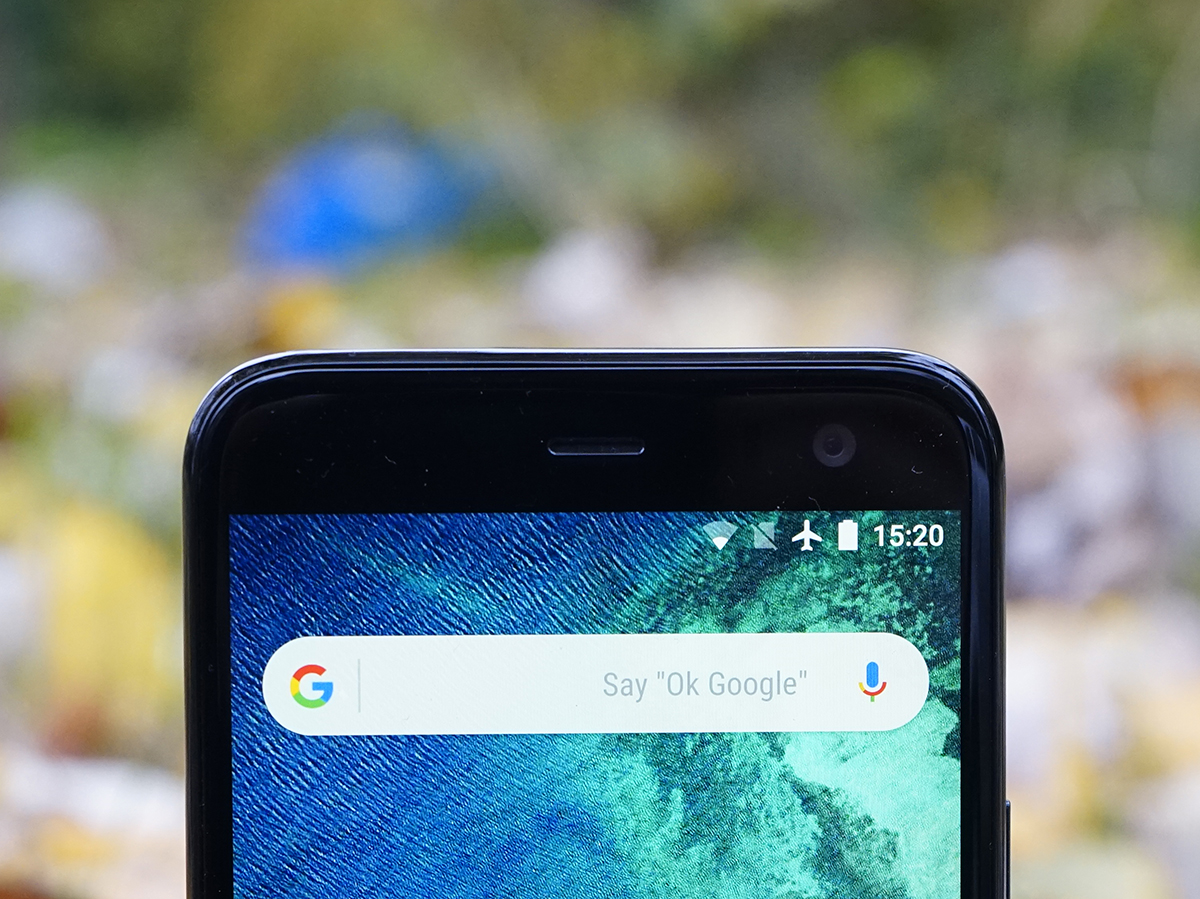HTC U11 Life review
Android One arrives in style

Fancy a taste of Android Oreo, but don’t have the cash to splash on a Pixel 2?
Up to now, it kinda felt like that a vanilla experience was off the menu – it was either full-fat Google, or a handset slathered in custom UI sprinkles from Huawei or Sony.
HTC is out to change that with the U11 Life, the first Android One phone to hit the UK. It’s running totally stock Oreo, with a design inspired by the gorgeous glass U11 and a few Pixel-esque features, like squeezable sides for waking Google Assistant.
With sights firmly focused on the mid-range, though, can it muscle in on Motorola – who has been doing the almost-stock-Android thing for years now?
DESIGN & BUILD: REFLECT ON IT
With the same green-tinted shiny back panel as the U11, the U11 Life looks every bit the high-end phone. Get it in your hands, though, and you’ll soon spot how HTC has kept the price down.
Instead of Gorilla Glass front and back, here you get a polycarbonate frame covered by an acrylic back panel. It makes the whole thing feel a lot lighter, and is nowhere near as life-proof as glass: it picked up a few scuffs and scrapes in just the few short weeks we spent reviewing it, and it attracts so many fingerprints you’d think they were magnetic.
It also sounds hollow when you give it a tap. So it looks the part, but doesn’t feel as premium as the similarly-priced Honor 9.
Chunky display bezels don’t help matters, either. Sure, it leaves room underneath for a fingerprint sensor and light-up hardware buttons, but with OnePlus and Honor making the switch to skinny 18:9 aspect screens, these more traditional mid-rangers are going to start feeling out of date really quickly.
That finger scanner is a little sluggish, too. Huawei’s sensors are a lot quicker to skip the lock screen.
On the plus side, you do get IP67 water-resistance – something that’s still tough to find at this price. Props to HTC for adding it here.
SCREEN & SOUND: HALF-PRICE HEAD TURNER

HTC has long been a steadfast supporter of LCD screens for its phones, and that doesn’t change here – but don’t go pining for OLED just yet.
The U11 Life has a seriously impressive display for the cash, with vibrant colours and dynamic range that help give photos and videos plenty of pop. Viewing angles are on point, too.
Brightness is perfect for indoor use, but it could be a little lacking when stepping outside on sunny summer days. You don’t get HDR support, either, but that’s pretty much par for the course in mid-range phones right now.
It’s a 5.2in panel with a Full HD resolution, so text looks sharp enough to read at almost any size, and while contrast isn’t getting anywhere close to OLED, photos and videos still have a decent amount of depth to them.
Audio isn’t as impressive, though. The Life doesn’t have the U11’s BoomSound Hi-Fi Edition speakers, making do with a single driver pumping weedy, fairly quiet audio out the bottom of the phone. It’s all too easy to block it with your hand and mute it completely.
It also copies one thing we wish would have stayed on the U11 – the missing headphone jack.
You either use the bundled USB-C headphones, go wireless, or scramble around for a dongle. Not that HTC stuck one in the box of our review unit. None of the third party ones we tried worked, either.
On the plus side, using USonic tuning does make the bundled buds sound pretty decent. It’s a quicker process than Samsung’s AdaptSound, using sonar to quickly scan your ears and then tweak the audio accordingly. Going to be sticking with HTC’s provided in-ears? Then it’s definitely worth doing.
PERFORMANCE & BATTERY LIFE: NEEDS MORE JUICE

It’s no surprise that the U11 Life arrives with a set of mid-range internals – you’re not paying the big bucks for it, after all.
A Snapdragon 630 is no pushover, though, especially when paired with 3GB of RAM. It mostly matches the Moto X4 for flat out performance, loading apps and games in quick time and showing minimal lag or stutter when switching between them. Sure, it’s slower than a flagship, but not by much.
If you want a little extra helping hand when it comes to multitasking, there’s a version with 4GB of RAM available direct from HTC. It also doubles the on-board storage from 32GB to 64GB, but seeing how both phones have a microSD card slot for adding more capacity whenever you need it, you can probably save your cash.
3D games only have to render at 1080p, so don’t struggle to play smoothly, although some of the more demanding titles in the Play Store can be a little jerky. If silky-smooth gaming is a must, you’ll have to spend a little more cash on your phone.
The one thing HTC probably shouldn’t have skimped on is the battery. The U11 Life makes do with a 2600mAh cell, which is a lot less than you’ll find in most of its rivals. Battery life is only average at best, and saps rapidly whenever you’re doing anything strenuous like tethering or streaming video.
It’ll still get you through to the end of the day, just about, but this is a phone you’ll be plugging in the moment you get home, rather than just before bed. Annoyingly, the USB-C port is offset to one side of the phone, instead of dead centre – it’ll take some getting used to. Don’t expect fancy extras like wireless charging here, either.
OS & SOFTWARE: LOCK, STOCK, AND A FEW BONUS APPS
Android One is Google’s effort to get more consistency across phones, so customers aren’t left in the dark when they switch, or feel tied to one particular manufacturer.
For the most part, it works: the U11 Life feels just a like a Pixel phone, with the same swipe-to-open app drawer, same familiar quick settings screen, and same friendly Google apps waiting for you when you first switch it on.
You even get the Pixel 2’s Active Edge touch-sensitive sides – or rather, HTC Edge Sense. It was a feature Google loved so much it pinched it for the second-gen Pixel, but here you’re getting the original experience.
It’s a better one, too, because you can set up separate gestures for a short and long squeeze, and they don’t have to be used for Google Assistant. You can jump straight into the camera app and take a photo with it if you prefer.
As well as getting Android Oreo out of the box, you’re guaranteed software updates for three years – good luck finding another phone maker willing to commit to that kind of support.
Of course, HTC still found a way to add a few software tweaks of its own, away from stock Android. The Settings screen has had a slight make-over, for example. These don’t really get in the way, though, so you can get on with using the phone, rather than hunting through different screens to find the app you’re after.
CAMERA: SUPERIOR SNAPPER

There’s no dual-camera nonsense going on here: the U11 makes do with a single 16MP, f/2.0 snapper, and puts in a very good performance indeed.
Colours are true to life, if a little on the muted side – some might prefer the more vibrant hues of Samsung’s Galaxy S8. Detail is very good, and exposure is handled very well by the HDR Boost mode. It is a little slow to save your shots, though.
Phase-detection autofocus is about as fancy as this phone gets, as there’s no optical image stabilisation to keep your low-light shots from looking blurry. If you can keep a steady hand, though, you’ll be rewarded with shots that are fairly low on noise, yet keep colours and contrast looking natural. Detail naturally takes a hit here, though.
In both light and dark environments, the U11 Life does lean towards underexposure, in order to cram as much dynamic range into every shot. You can boost it manually, but run the risk of blowing out highlights – especially in the dark.
It’s a pretty decent performer all round, really. No, it’s not going to give the Pixel 2, iPhone X or Galaxy S8 a run for their money, but unless you spend significantly more cash, you won’t get a significantly better camera.
The front-facing snapper has the same 16MP, f/2.0 sensor as the rear camera, so your selfie game will be on point, and you can shoot 4K video clips at 30fps too.
HTC has used its own camera app, instead of Google’s own algorithm-savvy one. It’s fine for the most part, with panorama, slow-motion, hyperlapse and RAW shooting, but you’ll certainly notice the shutter lag.
HTC U11 LIFE VERDICT
As Android One’s UK debut phone, the U11 Life is a pretty decent mid-ranger, with a competent camera and subtle but sleek styling. Although you can bet those thick bezels are going to date quicker than frosted tips and double denim.
It’s the price that makes this a tricky phone to recommend.
The Moto G5 Plus has a better battery and almost-stock Android (albeit Nougat rather than the newer Oreo), plus it costs £90 less. And it has a headphone jack, too. The excellent value Honor 9 is only £30 more, but packs in two cameras for more flexibility, a beefier CPU for more power, and an even more premium build.
IP67 waterproofing is a bonus you won’t get on similarly-priced rivals, and you won’t find squeezy sides on any other mid-range phones, but it means sacrificing other things like battery life to get them.
If a stock Android UI is important and you can’t afford a Pixel, it’s easy enough to justify finding room in your pocket for one of these right now – but if you can wait a bit, it’ll be interesting to see which other companies also give Android One a try. And you’re not fussed about custom skins? Then the alternatives are very tempting indeed.
READ MORE › The 10 best smartphones in the world right now
Tech specs
| SCREEN | 5.2in, 1920×1080 LCD |
| CPU | Qualcomm Snapdragon 630 |
| MEMORY | 3GB RAM |
| CAMERA | 16MP, f/2.0 rear w/ PDAF, LED flash. 16MP, f/2.0 front |
| STORAGE | 32GB on-board, microSD expansion |
| OPERATING SYSTEM | Android 8.0 Oreo / Android One |
| BATTERY: | 2600mAh non-removable |
| DIMENSIONS: | 149x73x8mm, 142g |
Stuff Says…
An affordable way to get stock Android 8, with a capable camera and great design to boot – although battery life could be better
Good Stuff
Great mid-range screen
Decent camera
Stock OS
Bad Stuff
Mediocre battery life
No headphone jack
Expensive for Android One












